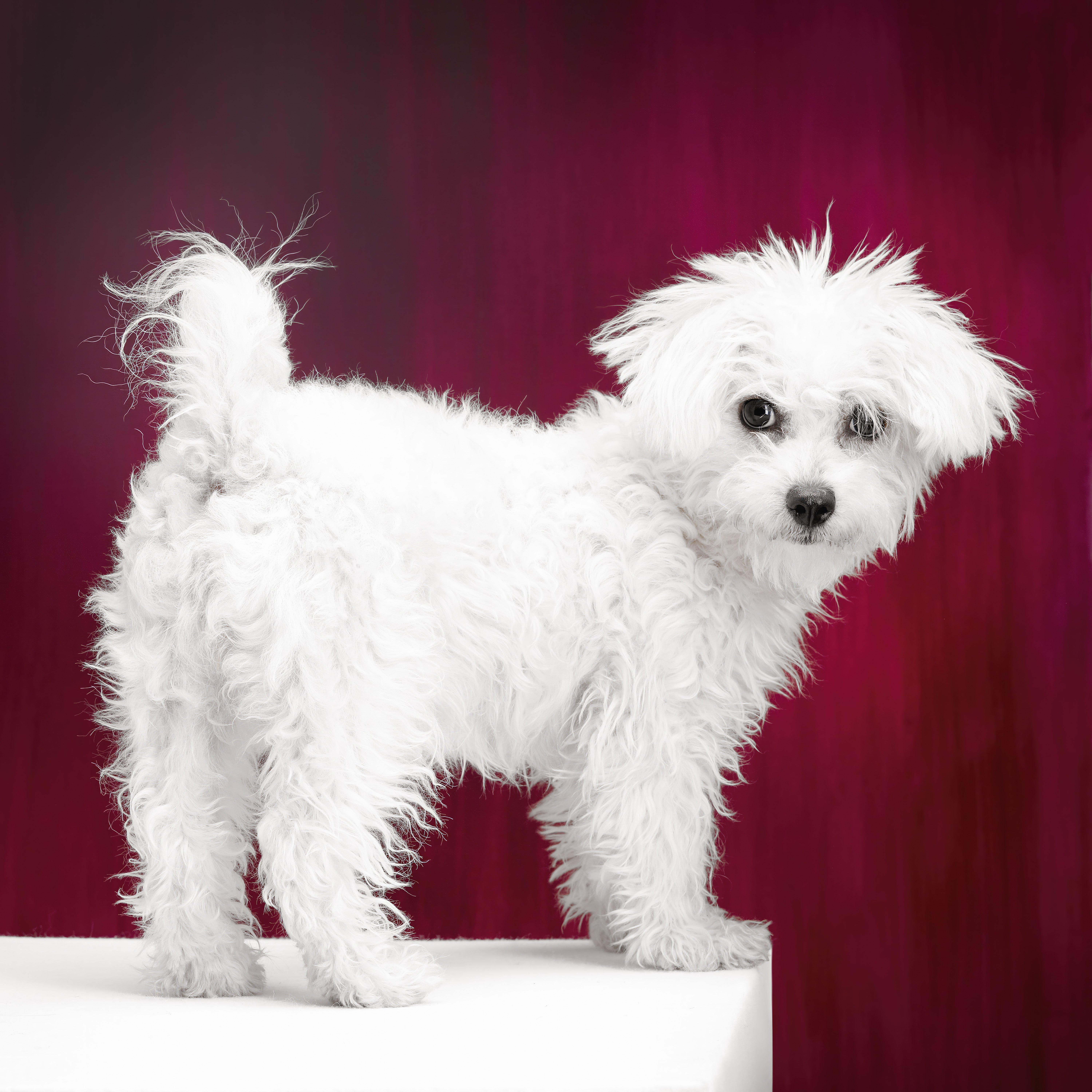Bolognese
No, it’s not a type of pasta—the Bolognese is a small but personality-filled companion dog with a soft, white, cotton-like coat. A part of the Bichon family, the Bolognese dog is a small but sturdy little lover. They have active minds but don’t require a ton of physical activity. They are playful and love people, but might dislike being separated from their owners or families.
Breed characteristics carousel
Learn More
Need to Know
- Good for experienced and non-experienced owners
- Generally healthy breed
- Enjoys gentle walks and can get by with less than an hour of walking a day
- Minimal drool
- High-maintenance grooming needs, including daily brushing
- Chatty and vocal dog
- Is on high alert and barks
- Might not like other dogs
- May need additional training to live with other pets
- May need additional supervision to live with children
- Especially good for city life but can also live in a suburb or rural areas
- Cannot be left alone for long periods of time
- AKC Registered Breed

Personality
Bichon Bolognese bond closely with their owners and prefer having a packed agenda alongside their owners to staying at home. Intelligent, quick, and even witty, they are not highly physical dogs and don’t require a ton of exercise. They can, however, be very alert, potentially barking a lot. They often have separation anxiety and cannot be left alone for long periods of time.
A Bolognese is an aristocrat, although he or she might not be aware of their status. A member of the Bichon family, Bolognese can be traced back to Bologna, Italy as early as the 11th and 12th centuries. Popular with ruling families and nobility, they were kept by aristocrats such as Madame Pompadour, Louis XIV of France, Philip II of Spain, and Catherine the Great of Russia. While you don’t have to roll out the red carpet works for your Italian snowball, they were historically treated like royalty, perhaps even drinking from gilded dog bowls.
These little cloud puffs do well with individual owners, families, other animals, and even strangers if their owners are around. They like to go along for the ride, which is fairly easy given their size and weight. They can have intense separation anxiety and don’t do well on their own. Because of their generally calm temperaments and preference for being near their owners, seniors or retirees also make ideal Bolo owners
Small space? Bolognese don’t mind. They do just as well in apartments with moderate exercise as they do in a larger house with a yard. You can tire their active minds through low-key activities such as puzzles, chasing a ball, or learning new tricks.
Bolos don’t have any space requirements as long as there is access to exercise and their owners are close by, ready for them to jump into their laps.
It’s easy to see why the European aristocracy loved the Bolognese. Their all-white, fluffy, cotton-like coat is striking, although it does require regular maintenance. Traditionally, their coats are kept long. This means they can tangle easily, so it’s important to brush them out especially around the stomach, ears, and legs to prevent matting. Their adorable, inquisitive faces should be trimmed regularly around the eyes. Their nails should be trimmed frequently, ears cleaned, and teeth brushed regularly. They are considered non-shedding dogs, which means people with mild to low allergies can do well with them.
Positive reinforcement is the name of the game for these clever dogs when training them. Some might have “small dog syndrome,” or a “pack leader” behavior which can lead to separation anxiety, but this can be worked out with training. If possible, socialize Bolognese puppies early in life to give them the confidence to be around others. They might be slow to potty train, so have patience with them. They are happiest when given mental stimulation and physical exercise.
They do best with quieter homes, families with older children, retired couples, or single owners, but a Bolognese can do well with young children, other family members, and other dogs in the right situation.
The cost of a Bolognese from a breeder is significantly more than the cost of adopting one from a local shelter or rescue. The adoption fee usually covers additional items such as spaying or neutering, vaccines, and microchipping.

Learn more about feeding and caring for your Bolognese on Purina.
Did You Know?
- They might be considered a rare breed now, but Bolognese enjoyed living the high life as companion dogs to aristocrats like Catherine the Great, Madame De Pompadour, and Empress Maria Theresa of Austria. You can see them alongside their owners in works of
